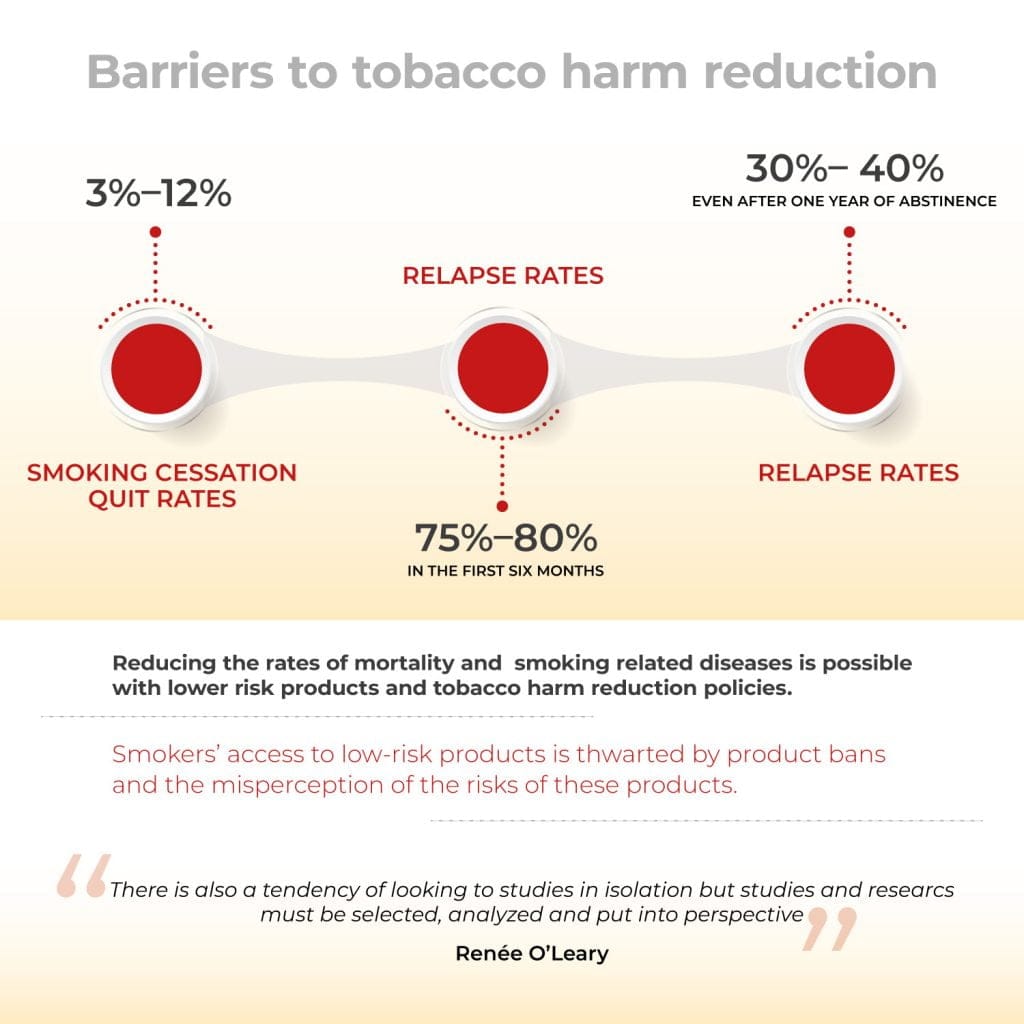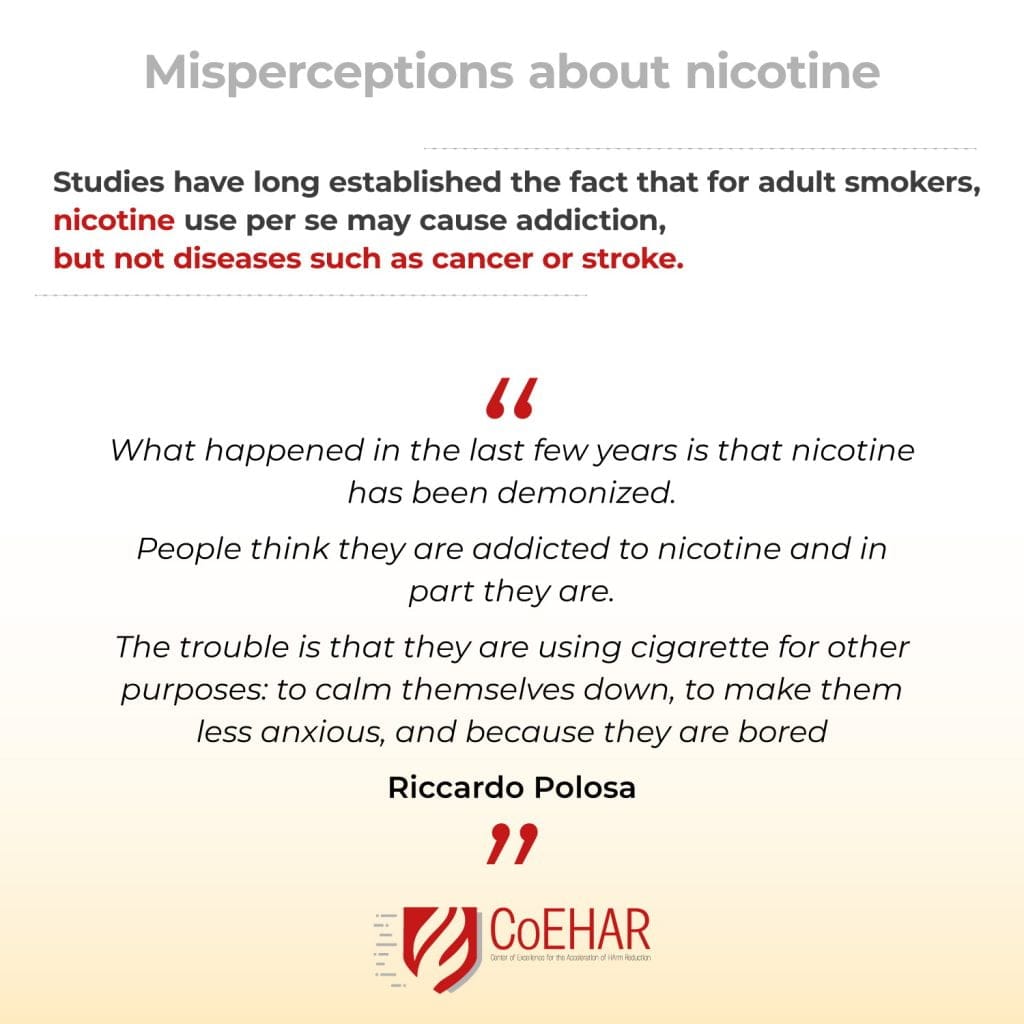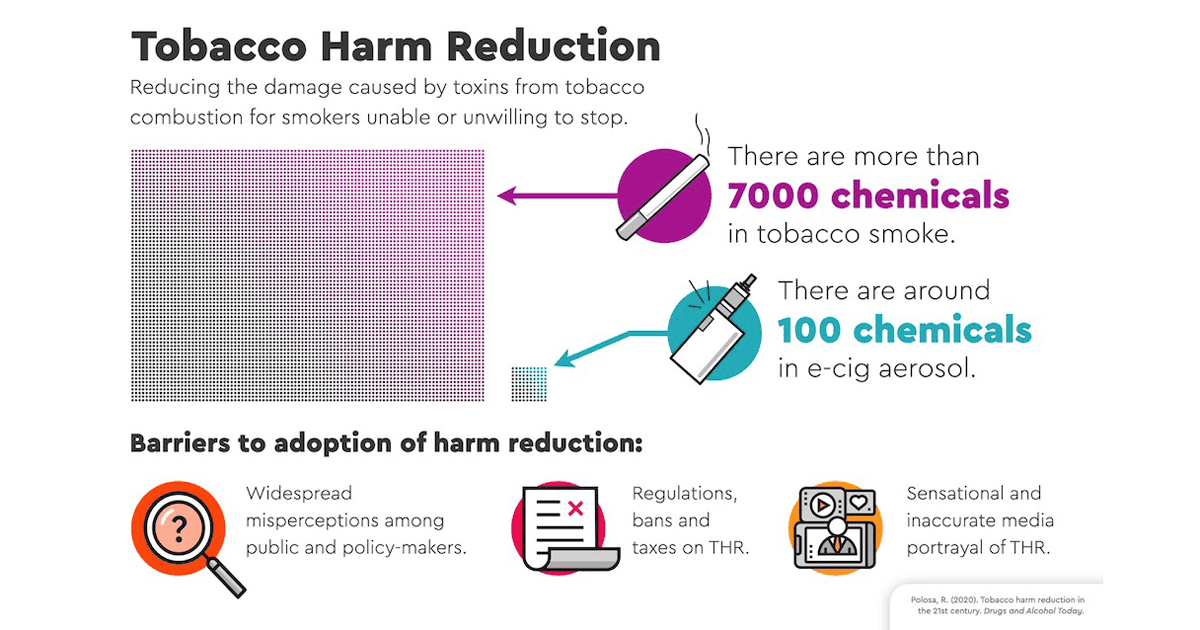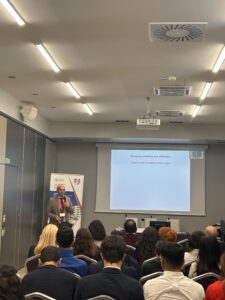Toxicological testing, population studies, clinical trials and randomized controlled trials demonstrate the potential reductions in exposures for smokers. Unfortunately, socio-cultural and economics barriers, such as heavy taxation, misperceptions about nicotine and unsubstantiated fears of youth addiction, prevent low risk products to become accessible to all and a good choice for those who want to quit smoking.
Catania, 16 luglio 2020– Quitting smoking for good is not easy and requires an effort that many smokers are unable to achieve. Today, there are alternatives from tobacco harm reduction strategies that can help those who want to quit smoking. Unfortunately misrepresentation about nicotine and low risk products, exclusivist policies and heavy taxation prevent access to these low risk products
The paper “Tobacco harm reduction in the 21st century”, by Dr. Renée O’Leary
and Prof. Riccardo Polosa, offers a 360-degree view of smoking addiction and the challenges that THR researchers are committed to addressing.
For the smoking cessation, quit rates are very low, from 3%–12%, and relapse rates are high, from 75%–80% in the first six months and 30%– 40% even after one year of abstinence.
Reducing the rates of mortality and smoking related diseases is possible with lower risk products and tobacco harm reduction policies. Although these products are not risk free, they offer a viable alternative for smokers who rely on cigarettes as a form of reward or to let off steam. To offer an alternative that delivers nicotine is an offer of the opportunity to not turn to conventional cigarettes.

The barriers to tobacco harm reduction originate in regulation and misperceptions. Smokers’ access to low-risk products is thwarted by product bans and the misperception of the risks of these products. Smokers, scared by contradictory information, reject chosing lower risk products, and their use is certainly not encouraged by sensational media headlines.
“There is also a tendency of looking to studies in isolation. So suddenly if there is a study in vitro (it means on cells) that shows some pretty nasty results, it becomes the only indicator of the situation. Studies and researcs must be selected, analyzed and put into perspective” explained Dr. Renée O’Leary.
Increasing taxes on reduced-risk products could function to deter smokers from switching to them. Not only do bans preclude the adoption of harm reduction strategies but also they can foster a black market for the products, as we noticed with the EVALI outbreak in USA, when hospitalized patients almost universally admitted to the use of illegal THC vaping products bought on the streets.

Studies have long established the fact that for adult smokers, nicotine use per se may cause addiction, but not diseases such as cancer or stroke. Yet even health professionals have misperceptions about the health risks of nicotine. A survey of 826 full-time faculty members in the schools of medicine, public health, dentistry and nursing at the University of Louisville (US) found that 38% believed that nicotine, separate from smoking, is a high-risk factor for heart attack and stroke and another 50% of faculty members deemed nicotine itself a moderate risk factor for these diseases. In the UK, 40% of the public wrongly believe that nicotine is the cause of smoking-related cancers.
“What happened in the last few years is that nicotine has been demonized and part of that is because health care providers are not trained properly. We know that nicotine affects baby development or induces low birth rate. But nicotine does not cause cancer in adults smokers. People think they are addicted to nicotine and in part they are. The trouble is that they are using sigarette for other purposes: to calm themselves down, to make them less anxious, and because they are bored”.

Probably the most powerful barrier to tobacco harm reduction is the fear that e-cigarette use by youth use will lead to nicotine addiction and thereby increase the uptake of tobacco products.Yet, according to surveys, 26% of US 12th grade students reported vaping only once or twice a month.
Public health researchers must be forthright about the low effectiveness of cessation treatments so that the necessity of tobacco harm reduction can be put in a proper perspective. Studies observing the health of long-term users of these products are a must to indicate the potential benefits or shortcomings of tobacco harm reduction strategies.
“There is little doubt that combustion-free nicotine delivery systems are a valuable, realistic and much less harmful asset in the fight against smoking. Good quality research will be increasingly important to establish tolerability, safety, effectiveness and harm reduction potential of these new technologies and to add credibility to the tobacco harm reduction paradigm. Technological innovation is already delivering significant improvements not only in their quality, but also in their effectiveness and safety. A lot of highly qualified work has got into this review and I hope it will have the impact it deserves amongst multiple public health stakeholders”, stated Prof. Riccardo Polosa.
There is need for change: media and public health authorities must verify their sources and research studies, providing news as accurate as possible.
As we read in the paper :”For those of us committed to tobacco harm reduction, there is no turning back – we will advocate for our patients, families, friends and fellow world citizens for their right to avail themselves of snus, heated tobacco products and e-cigarettes”.




